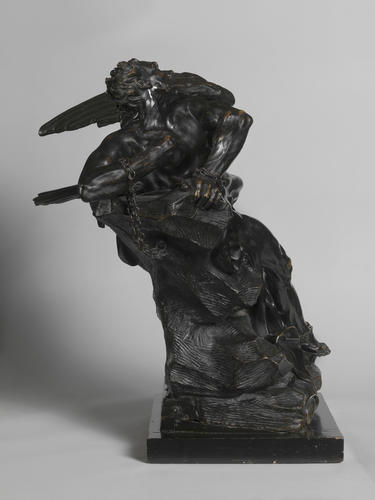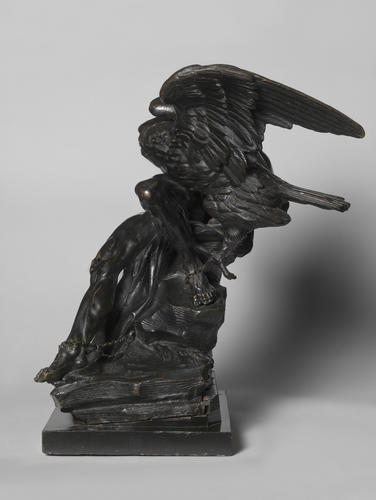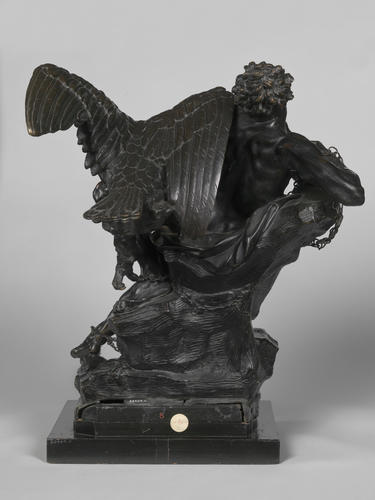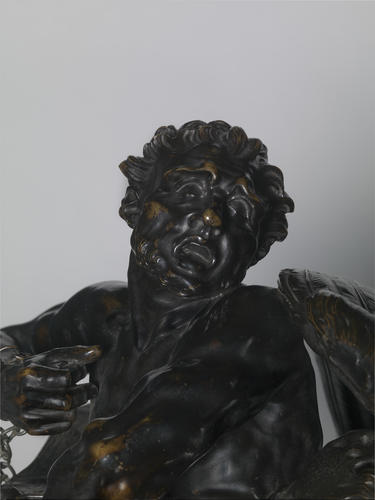Prometheus Bound 1703
Bronze | 49.2 x 42.0 x 44.0 cm (whole object) | RCIN 33464
-
Ovid relates how Zeus condemned the titan Prometheus to perpetual agony for having betrayed to mortals the secret of fire; he was chained to a rock on Mount Caucasus to which each day an eagle would descend to feed on his liver, which was restored overnight. Ever a popular subject with artists, it was one of those prescribed by the French Academy for the final exercise in the process of admission, the morceau de reception. The pose of the stricken titan, leaning steeply backwards and with one knee sharply flexed, may ultimately derive from Michelangelo's figure of Adam on the ceiling of the Sistine Chapel. The composition was probably first used for a bronze group of this subject (with an additional, free-standing figure of Mercury) by the Florentine Giambattista Foggini (1652-1725) around 1700. (That group, which was presented to the French painter Hyacinthe Rigaud in 1716, is now in the Victoria and Albert Museum.) It was used again by François Dumont for his bronze of the same subject in 1710. Bertrand made this bronze, which is not only signed but is dated specifically aoust 1703, having already been accepted as Academician in 1701. The livret for the Salon of 1704 includes une figure de Prométhée sur son scabellon par M. Bertrand which was most probably the present bronze. The model is known in only one other cast, which is neither signed nor dated (sold Sotheby's, London, 9 July 1992). Like most of his contemporaries, Bertrand also undertook architectural carving (at Versailles and in the choir of Notre Dame) and life- size marble and lead figures in collaboration with René Frémin (1672-1722). His small bronzes and terracottas are often animated with the strong facial characterisation visible here. Catalogue entry from Royal Treasures, A Golden Jubilee Celebration, London 2002
Provenance
Rundell, Bridge and Rundell; from whom bought by George IV, 16 August 1824 (£68 15s). The bronze was placed in the library at Carlton House, where it was listed in 1826. It was despatched to Windsor Castle in 1828.
-
Creator(s)
(retailer)(place of production)Acquirer(s)
-
Medium and techniques
Bronze
Measurements
49.2 x 42.0 x 44.0 cm (whole object)
Category
Object type(s)













